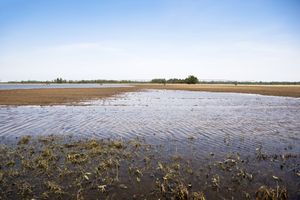Crop Insurance Changes Favor Farmers Considering Prevent Plant in 2020
 Farmers in North Dakota are furiously fighting Mother Nature this week, hurrying to harvest acres that never got harvested in 2019. As farmers across the country look at 2020 and could be faced with more prevent plant decisions, DuWayne Bosse of Bolt Marketing says some slight changes by USDA’s Risk Management Agency (RMA) could work in the favor of farmers facing another difficult year.
Farmers in North Dakota are furiously fighting Mother Nature this week, hurrying to harvest acres that never got harvested in 2019. As farmers across the country look at 2020 and could be faced with more prevent plant decisions, DuWayne Bosse of Bolt Marketing says some slight changes by USDA’s Risk Management Agency (RMA) could work in the favor of farmers facing another difficult year.
“It’s a definitely a case by case situation, but RMA has come out and said if you have corn out in the field in North Dakota and you can’t get that harvested come springtime, and then let’s say you go past that June 10 late plant period for soybeans, you will still be able to collect prevent plant this year,” he says. “Like I said, that’s a case by case situation, so talk to your crop insurance agent.”
Bosse says the change could help some producers ease the stress of planting past the crop insurance date. He says that could also eat into soybean acreage estimates for the upcoming crop year.
While the changes may be a positive for farmers who had prevent plant last year, there are some caveats to keep in mind.
“If you have those acres and if you have insured them in the past, if they’re part of your existing unit, there’s going be a lot of flexibility,” says Frayne Olson of North Dakota State University. “There’s going to be a lot of ability to be able to claim those as prevent plant. However, if you rent some new land, if you were able to pick up some extra ground, and corn has not been harvested on those acres, RMA is going to come back and say ‘no, those are not eligible for prevent plant.’”
Tommy Grisafi of Advance Trading spends much of his time in North Dakota. He says in talking with producers about 2020, he’s encouraging farmers to plan to plant those acres this year, but don’t push the envelope too much when deciding if it’s too late to plant. He says that’s what caused some farmers to not get all their crop harvested last year.
“Mother Nature truly showed farmers in North Dakota, Minnesota and Iowa that if you’re going to buy a 90-day corn, you have to follow the rules,” says Tommy Grisafi, Advance Trading. “I think people are lowering their numbers and going more of the 86- and 84-day. Crop insurance is a huge benefit but Mother Nature’s large and in charge.”
While unharvested corn is still standing in North Dakota, area farmers say the quality of the crop improved on some of their acres. Bosse says that means USDA may not need to lower the 2019 production estimate in upcoming reports.
“I think [the] corn in North Dakota still standing out there is really high yielding corn,” says Bosse. “Even if we’re going to talk about harvest losses and test weight, which is a real pull down on the total net bushels, maybe we needed to start it at a higher yield than we were anticipating.”
Farmers are still bringing in corn that has high moisture content. While it’s harder to market some of that crop, buyers are finding a way to move the crop.
“Typically what happens is it’s going to go into a feedlot,” says Olson. “If it’s very low test weight, then they’re actually doing some blending. They’re pulling some crop from this region, they’re pulling some crop from Kansas or Nebraska where they had higher test weight and they’re blending it off to try and get the test weights they need to be able to be functioning, whether it be an ethanol plant or whether it be a feedlot.”
As farmers prepare for 2020, they’re reflecting on a difficult 2019. Grisafi says it was a difficult year that taught those in agriculture a lot.
“2019 taught us we’re vulnerable,” adds Grisafi. “Often times as a marketing panel, everyone wants to know about price, and obviously production is more important than price. What I’ve had to learn as a marketing advisor up here is without the bushels, you don’t have anything. We have to grow the bushels, and then from that, find a way to market it. Time tends to work out on our side up here, but not if you don’t have a bushel to sell.”
Source: Tyne Morgan, Ag Professional
